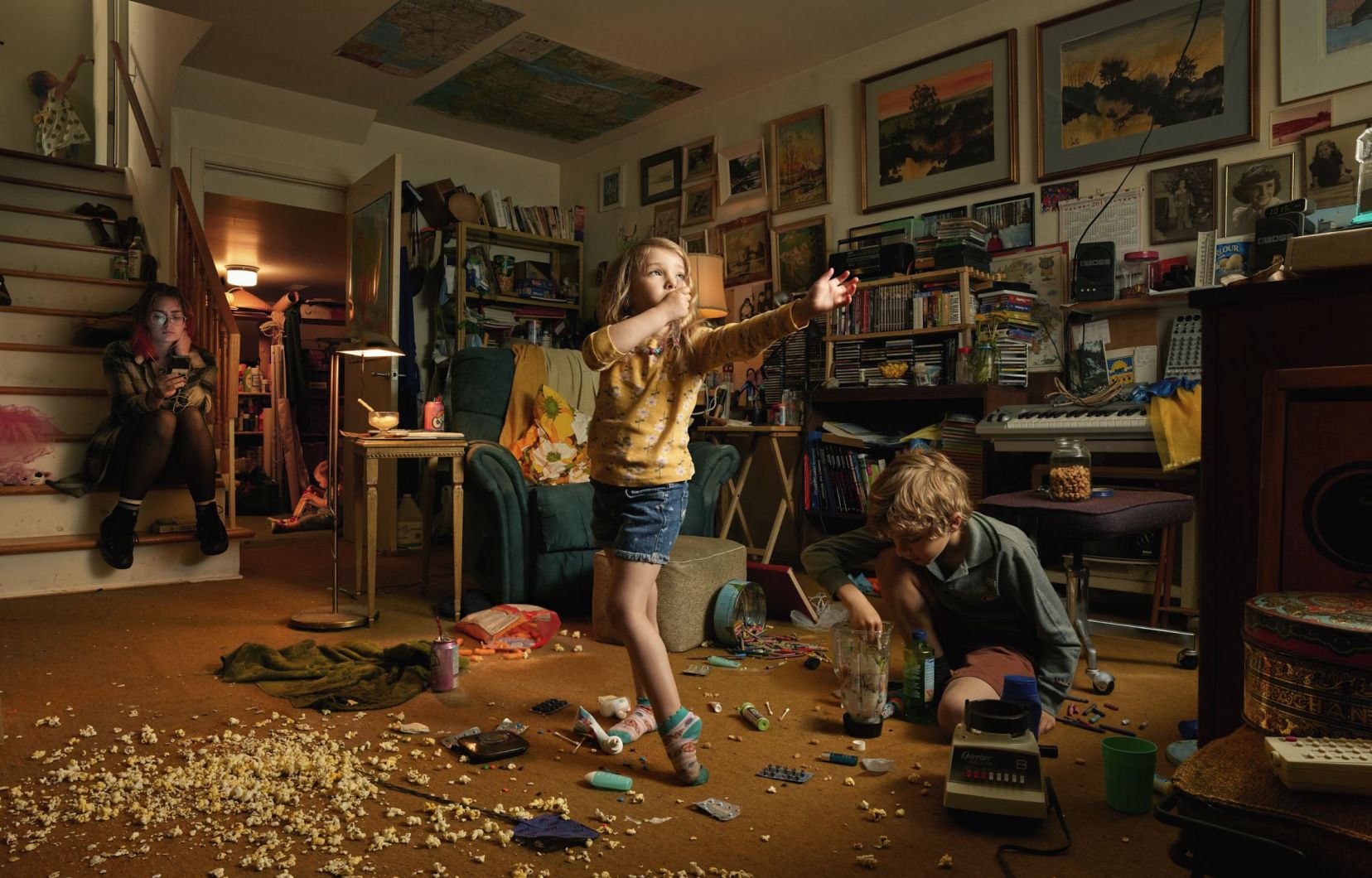They take photos like they take movies. Léa Valérie Létourneau, scenographer, decorator and artistic director, and André Turpin, director of photography, had this crazy idea a few years ago and, today, their project comes to life at the Phi Centre. Clustersthis exhibition of some of the photos taken together by the duo, is in no way a documentary, despite appearances: “we want to create fiction”, warns André Turpin.
“Thanks to my job, I often find myself in completely crazy places with all the stories of the people who live there,” says Léa Valérie Létourneau. Clustersit is therefore the story of the little story, that of those that the latter gets to know and who live in these unusual places commonly threatened by gentrification and the economic crisis — offices, cellars, shops, etc. “We must take the trouble to really take an interest in them to make them understand that what we want to do is honor these places, which are a part of their deep intimacy, and that they trust us,” she assures.
There is, for example, this photograph taken in a Montreal business specializing in the sale of carpets, whose former owner, who had been in business for more than 60 years, suffered from Diogenes syndrome, a disorder characterized by the excessive accumulation of objects. “The family decided not to throw it in the trash, so there was a certain emotion to respect on site,” says the artist.
“What interests us about these places, even before the staging we invented, is all the life that happened there before they disappeared,” recalls André Turpin. “Our work process begins when Léa Valérie, who is very, very focused on people, learns enough about the personal stories of all the people who have passed through there, and it is from these stories that we draw inspiration to design the staging of our photos,” he adds, still fascinated by all the stories that have been told to him over time. Then comes fiction, in a cinematographic approach where actors embody the protagonists straight out of the pair’s imagination. “It’s a mini-production, in fact,” emphasizes the director of photography.
Art and technique
You can’t change your nature. “The process of taking our photos is like that of a short film,” continues Léa Valérie Létourneau. Since they work with a digital medium format camera, it is, among other things, necessary to collaborate with a photo assistant. “And then, we also work with an editor because, technically, it’s not just a photo,” she notes. Each object is thus carefully placed, of course without distorting the soul of the place, each detail well thought out.
This is where André Turpin’s expertise shines. In short, for a single photo, there are several dozen images that must be taken. “Everything is in focus in our photos, there is no blur, no depth of field, unlike in cinema,” explains André Turpin. And he continues, always with attention to detail: “So, we will take 60 photos where we change the focus to one inch, two inches, five inches… to infinity.” The final photograph is then constructed in post-production, like a succession of copy and paste that gives a palpable, almost immersive aspect to the image, especially since it is printed on a large scale. “It’s quite complex technically,” he emphasizes.
.If cinema is the art of time and the unexpected, photography, for its part, would be the exact opposite, believes André Turpin. “What I really appreciate with our series Clustersis that you can really control the image meticulously from start to finish,” he says, referring to the notion of rigid cinema. In the exhibition, the viewer actually arrives in the middle of the film. “We help him a little by suggesting staging, but he has to invent the scenario himself,” he notes, however. From clue to clue, the audience can thus create its own story, according to its own experience.
“In some ways, it is a medium, contrary to what McLuhan would have said, which is nevertheless hot, because it is involving, because we have to complete it, we have to participate in it ourselves,” believes the director of photography. A bit like in painting or in more “classical” photography. In any case, “the place is there to guide us,” concludes Léa Valérie Létourneau.
